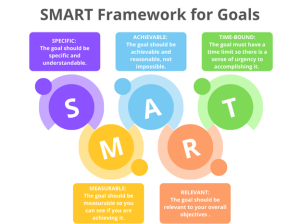7.6. Strategic Planning: A Guide for Achieving Success
Strategic planning is a crucial process for any organization aiming to compete effectively and achieve its goals. This process involves creating detailed plans to guide actions, allocate resources and set timelines to reach specific objectives. It’s a blend of deciding what needs to be done, how to do it, assigning roles and overseeing execution to ensure success.
Understanding Goals
The first step in strategic planning is setting clear goals. A goal defines what an organization aims to accomplish. For instance, if a retail store wants to prepare for a busy holiday season, the goal might be to increase sales by 15% compared to the previous year. The store manager would plan in advance by determining which products to stock, scheduling extra staff and setting up promotions to attract more customers. Achieving this goal involves a series of tasks, such as ordering inventory on time and training employees.
Setting Effective Goals: The SMART Framework
Good goals share certain characteristics. The SMART framework (Figure 7.3) helps in creating effective goals, which should be Specific, Measurable, Achievable, Relevant and Time-bound. For example, if a student wants to excel in a class, a SMART goal would be: “Earn an A in this course by studying for at least two hours each week and completing all assignments on time.” This goal is specific (earning an A), measurable (through grades), achievable (with planned study time), relevant (to the student’s academic success) and time-bound (within the course duration).

Figure 7.3 – SMART Framework
The Planning Process
The planning process involves several steps:
Set Goals: Define what you want to achieve.
Design the Plan: Develop a detailed plan outlining how to achieve the goals. This involves brainstorming, coordinating resources and setting deadlines.
Implement the Plan: Execute the plan by assigning tasks and ensuring all resources are in place.
Review Results: Evaluate the outcomes and make adjustments if necessary.
Implementing Plans Across Different Levels
Strategic planning occurs at various levels within an organization:
Strategic Planning: High-level planning by top executives to set the overall direction. For example, a company might plan to expand into new markets.
Tactical Planning: Mid-level planning by managers to implement strategies. This might include designing specific marketing campaigns or operational procedures.
Operational Planning: Day-to-day planning by front-line employees, such as scheduling staff or managing inventory.
Media Attributions
- Picture4

